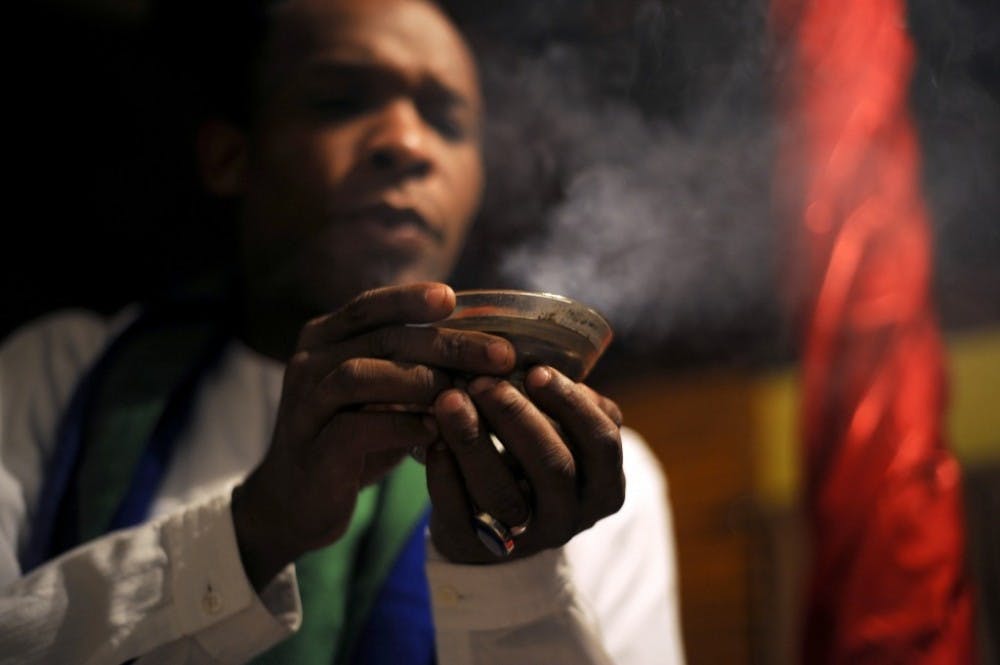Don’t light that incense just yet — and not just because it’s against university rules to burn incense in a residence hall.
A study by the University of North Carolina at Chapel Hill’s Gillings School of Global Public Health found that burning incense could cause lung inflammation.
Kenneth Sexton, retired research assistant professor of environmental science at UNC and co-author of the study, compared the products of incense burned in the study to those found in cigarette smoke.
“We found carbon monoxide concentrations from burning incense to be many times greater than from cigarette smoke,” Sexton said. “The particle concentrations from incense were similar to cigarette smoke.”
Incense is a combination of spices, wood and other ingredients that are burned to release fragrant smoke. Various types of incense exist across nearly every culture in the world and are used in religious or meditative settings, but can also be used to create a pleasant smell or create a mood.
Among the products found in incense smoke in the study were carbon monoxide, nitrogen oxide and formaldehyde.
The study, written by Sexton and Karin Yeatts, research assistant professor of epidemiology at UNC, looked specifically at the way incense is burned in the United Arab Emirates (UAE), a small country in the Middle East.
To reenact the type of environment in which incense would be burned, Sexton and Yeatts burned the two most popular types of incense in the UAE, Oudh and Bahkoor, in small, concentrated rooms for three hours at a time.
Cultured lung cells were also placed in the room and the researchers saw that the cells became inflamed in this environment.
Sexton said while the study shows incense can cause lung cell inflammation, he cannot yet say incense would have the same effect on an individual’s actual lungs.
“We did not try to simulate actual lung exposure,” Sexton says. “We didn’t have people in the room and we did not try to estimate how much material would be deposited in a human lung.”
In the UAE, 94 percent of households burn incense on a weekly basis. While incense is not as popular in the United States, Yeatts said this study is still important to make those Americans who do use incense aware of the risks.
“If they do burn incense, they are potentially being exposed to some of these air pollutants, and some of the air pollutants that we found and measured are criteria EPA pollutants that are regulated by the EPA outdoors,” Yeatts said.
Sierra Ferrier, a former Elon student, said her way of using incense indoors differs from Sexton and Yeatts’ experiment.
“I try to burn only for 10 t0 30 minutes if I am in the room,” Ferrier said. “It’s not really good to burn in your own personal room when you’re in there. Think of incense as a really strong candle. It’ll give you a headache if you’re sitting in smoke in a small room.”
Ferrier also said the quantity of smoke produced by incense also varies between types. In the UNC study, only Oudh and Bahkoor incense were used, while Ferrier says she uses Nag Champa.
“If I have really strong, good quality incense, I burn half the stick,” Ferrier says. “Good quality means it is very slow burning, so in turn, you burn less.”
Sexton and Yeatts’ study also found that when charcoal was used to maintain the incense burning, as is done in UAE homes, there was more carbon monoxide produced, which can lead to a higher chance of lung inflammation.
Senior Dan Konzman said in his experience with incense there is rarely a need to use accelerants.
“A little red coal stays behind on the end and burns it all the way until it’s done, so there is really no need to take any measures for burn maintenance,” Konzman said.
While Ferrier said she prefers to use ventilation and open spaces when using incense, Konzman said he uses incense in settings more like those in the UNC study because he prefers to watch the smoke dance in the air.
“Having the window open sort of messes with that, so I think I tend to prefer less well-ventilated areas,” Konzman said.


